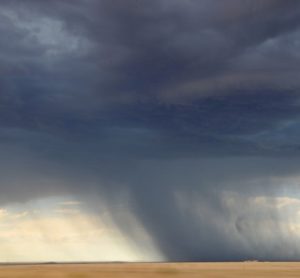 For Sporting Events: “Flash-to-Bang” is No Longer the IHSA Lightning Safety Guidelines
For Sporting Events: “Flash-to-Bang” is No Longer the IHSA Lightning Safety Guidelines
Although sometimes fascinating to watch, lightning is one of the most underrated causes of weather-related deaths in the United States, ranking second only to flash flooding.
Nearly 67% of lightning fatalities and injuries occur outdoors at events such as baseball, soccer, and golf. Striking from as far away as 10 miles, it is important to plan in advance and monitor the weather when preparing for outdoor activities. A plan of action should be in place for each location, which includes a designated person responsible for monitoring the weather, and a qualified person (commonly an official, Athletic Director, or manager) to make the decision of whether to suspend a competition. If evacuation is needed, it should be known where the teams and spectators will go and how long it will take them to get there.
When to Seek Shelter Common practice use to be the 30 second, flash-to-bang method, where you would start counting at the first sight of lightning, stop after hearing thunder, and then divide that number by five to determine how many miles away the lightning is. The IHSA has now released their new weather safety guidelines which recommend taking shelter immediately after hearing thunder or seeing a cloud-to-ground lightning bolt.
Safe Areas A fully enclosed building that is frequently used, such as a gym, is the ideal safe area. In absence of such a building, you can also sit inside any vehicle with a metal roof, roll up the windows and avoid touching the sides of the vehicle. If no safe structure is available, you should find an area where you can avoid being the tallest object, and minimize your contact with the ground by getting in the crouched position, placing arms around your legs and lower your head. You should always avoid lightning poles, flag poles, single trees, pools of water and open fields. Also avoid using land-line phones. A portable or cellular phone is a safe alternative.
Resuming Competition The National Severe Storms Laboratory recommends that everyone wait at least 30 minutes after the last flash of lightning or sound of thunder before returning to the field.
First Aid for Lightning Strikes 1. Survey the scene for safety, because lightning can strike twice. 2. Call 9-1-1 3. Lightning victims do not carry a charge, so they are safe to touch. Only if needed, move the victim to a safe shelter. 4. Check airway, breathing, and pulse. Begin CPR if necessary. 5. Treat fractures and burns, and keep the victim warm until help arrives.
Submitted by Stacy Witsman, MS, ATC/L.










